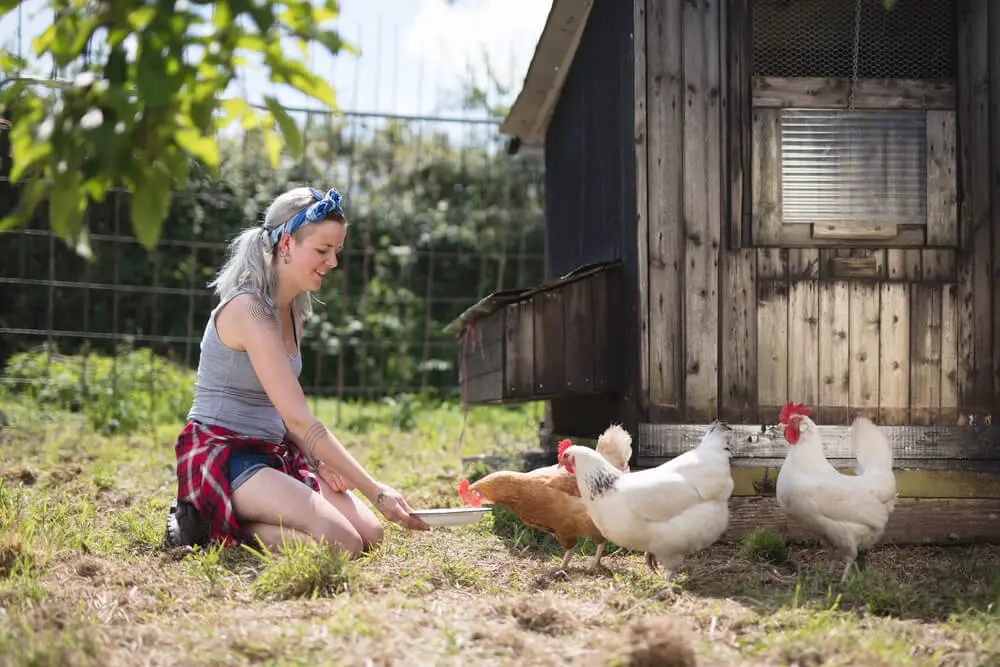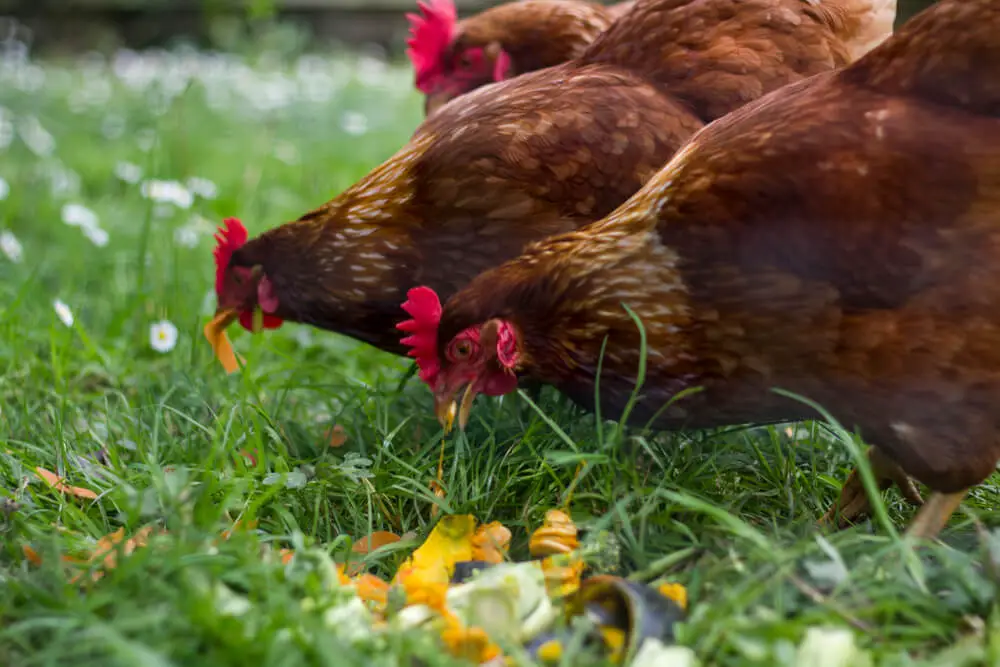The practice of feeding eggshells to chickens is not a new one. It has roots that trace back to old farming traditions. The main reason behind this practice is the calcium content in eggshells, which is essential for laying hens.
However, there are several considerations and methods for this practice that every chicken keeper should be aware of.
Key Takeaways:
- Eggshells are a natural and economical source of calcium for laying hens.
- Proper preparation of eggshells is crucial to ensuring they are safe and beneficial for your chickens.
- Common misconceptions about feeding eggshells to chickens can deter chicken keepers from this beneficial practice.
Benefits of Feeding Egg Shells to Chickens
Natural Sources of Calcium
Chickens, especially laying hens, have a high requirement for calcium. This mineral is crucial for the formation of eggshells. When hens are deficient in calcium, they can lay thin-shelled or shellless eggs, which is undesirable.
- Natural Calcium Source: Eggshells are almost pure calcium carbonate, making them an excellent source of calcium for your chickens.
- Absorption: Chickens can easily absorb the calcium from eggshells, ensuring that they receive the full benefit.
https://www.ourinspiredroots.com/feeding-eggshells-to-chickens/
Economic Benefits
Feeding eggshells to chickens is not only beneficial for their health but also for your wallet.
- Cost-Saving: Instead of buying commercial calcium supplements, you can recycle eggshells, which are essentially a free source of calcium.
- Self-Sufficiency: By providing a crucial nutrient from a waste product, you promote self-sufficiency in your poultry-keeping practices.
https://www.typesofchicken.com/how-to-save-money-while-raising-chickens-5-hacks/
Reducing Waste and Promoting Sustainability
- Waste Reduction: By recycling eggshells, you’re reducing waste and promoting a more sustainable way of living.
- Environmental Impact: Lowering the dependency on commercially produced calcium supplements also reduces the carbon footprint associated with the production and transportation of such products.
https://www.theprairiehomestead.com/2014/05/feed-eggshells-to-chickens.html
Preparing Egg Shells for Chickens
Drying and Crushing Egg Shells
The preparation of eggshells is a straightforward but crucial step to ensure they are safe for your chickens.
- Drying: After using the eggs, rinse the shells and let them dry completely.
- Crushing: Once dry, crush the eggshells into smaller pieces, ideally around 1/2″ in size.
| Step | Description |
|---|---|
| Drying | Rinse and air-dry the eggshells after using |
| Crushing | Crush the dried eggshells into 1/2″ pieces |
https://www.fresheggsdaily.blog/2019/03/myths-about-feeding-your-chickens.html
Baking Egg Shells (Optional)
Baking is not a necessary step but can be done to dry out the membrane and make the eggshells easier to crush.
- Baking Duration: Any temperature and time period can work. If you need a baseline, try 350 degrees for 5 to 10 minutes.
- Crushing Post Baking: Crush the baked shells into “bite-sized” pieces.
Storing Prepared Egg Shells
- Storage Container: Store the crushed eggshells in a canister or mason jar until you are ready to feed them to your chickens.
- Shelf Life: Eggshells can be stored for a long time as long as they are kept in a dry and cool place.
How to Feed Egg Shells to Chickens
Mixing with Feed vs Free-Choice Feeding
There are two common methods to feed eggshells to chickens: mixing them with their feed or offering them separately.
- Mixed Feeding: You can mix the crushed eggshells with your chickens’ regular feed.
- Free Choice Feeding: Offer crushed eggshells in a separate container so chickens can consume them as per their requirements.
| Method | Description |
|---|---|
| Mixed Feeding | Mix crushed eggshells with the regular feed |
| Free Choice Feeding | Offer eggshells in a separate container |
Ideal Size of Crushed Egg Shells
The size of the crushed eggshells matters as it affects the absorption of calcium.
- Size Matters: Eggshells should be crushed to about 1/2″ size for optimal absorption.
Common Misconceptions
Egg-Eating Behavior
One common myth is that feeding eggshells to chickens will encourage egg-eating behavior.
- Myth Busted: There’s no substantial evidence to support this claim. Providing enough calcium may actually help prevent egg eating behavior, as it satisfies the chickens’ calcium cravings.
Baking or Microwaving Egg Shells
- Myth Busted: Baking or microwaving is not necessary unless the eggshells are from outside sources which might carry bacteria.
Using Store-Bought Egg Shells
- Potential Risk: There’s a risk of transferring unwanted bacteria to your chickens if you use store-bought eggshells.
Experiences and Tips from Other Chicken Keepers
Every chicken keeper might have their own unique method when it comes to feeding eggshells to their chickens. Here are some experiences and tips shared by seasoned chicken keepers on online forums and blogs:
- Preparation Methods: Some prefer baking the eggshells to dry them out and kill any potential bacteria, while others simply air dry and crush them.
- Serving Methods: While some mix the crushed eggshells with feed, others prefer providing them in a separate container.
- Size of Crushed Eggshells: The size of the eggshell pieces also varies among chicken keepers, although most agree that smaller pieces are better for absorption.
| Tips | Description |
|---|---|
| Preparation | Some bake, some air-dry eggshells |
| Serving | Mixed with feed or served separately |
| Size | Smaller pieces are preferred for better absorption |
FAQs
- Why is calcium important for chickens?
- Calcium is crucial for bone health and eggshell formation in laying hens.
- Can I feed raw eggshells to chickens?
- Yes, raw eggshells can be fed, but it’s better to dry and crush them to avoid any health issues.
- Is it necessary to bake eggshells before feeding?
- Some people prefer baking to kill potential bacteria, but it is not necessary.
- Can eggshells replace commercial calcium supplements?
- While eggshells are a good source of calcium, they may not completely replace commercial supplements, especially if the chickens have higher calcium needs.
In addressing the practice of feeding eggshells to chickens, it’s evident that this traditional method serves as a natural and economical source of calcium for chickens. The process involves preparing eggshells by drying and crushing them, with an optional step of baking to eliminate potential bacteria. This preparation aims to make the eggshells safe and beneficial for the chickens, ensuring easy absorption of calcium which is crucial for the laying hens.
The discourse also touched on the economic benefits and the essence of reducing waste and promoting sustainability through this practice. Common misconceptions, such as egg eating behavior and the necessity of baking eggshells, were debunked to provide a clearer understanding of the practice.
Moreover, insights from other chicken keepers enrich the narrative by offering a variety of experiences and tips, highlighting the flexibility in methods of serving eggshells and the importance of the size of crushed eggshells for optimal absorption.

Shannon Stansberry has been engaged in the business of raising chickens for more than 12 years. In 2016, she accomplished the Agriculture & Natural Resources program at Mt. San Antonio College. At present, she tends to more than 80 chickens on her 4-hectare farm. Shannon regularly shares her insights and experience on how to raise healthy and contented chickens on the platform Typesofchickens.com

